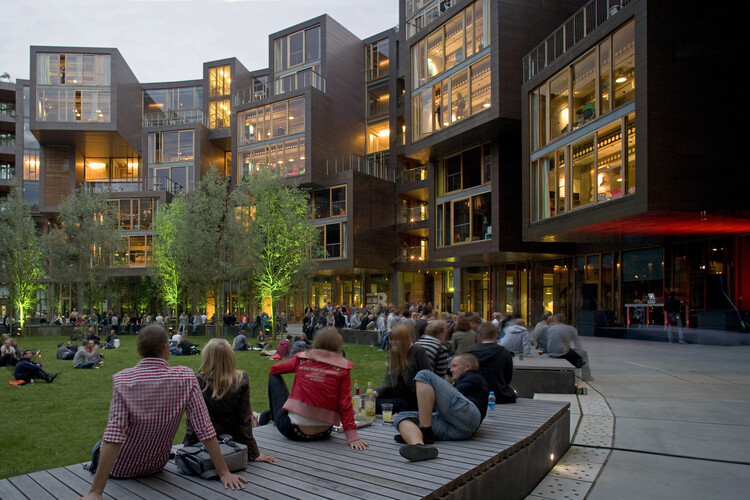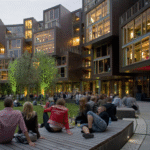Moving to the United States for higher studies is a life-changing milestone. But before classes begin and adventures unfold, there’s one important decision to make, finding the perfect student apartment. With thousands of housing options across major student cities like Boston, New York, Los Angeles, and Miami, navigating the U.S. rental market can feel overwhelming, especially for first-time or international students.
1. Understanding the Basics of U.S. Student Rentals
Before you start apartment hunting, it’s essential to understand how renting works in the U.S.
Most student apartments are either on-campus housing, off-campus apartments, or shared flats. Off-campus options often come fully or partially furnished and can be shared among students to split costs.
When renting, you’ll typically need to:
- Sign a lease agreement (usually 6–12 months long).
- Pay a security deposit (typically one month’s rent).
- Provide proof of income or a guarantor (especially for international students).
- Pay rent monthly, often online through property portals.
If you’re new to the US, always read your lease carefully; it outlines your rights, responsibilities, and what happens if you break the lease early.
2. Types of Student Housing Options
The U.S. offers diverse student housing types depending on your lifestyle and budget:
| Type | Description | Ideal For |
| On-Campus Dorms | Located within university grounds, offering convenience and community. | First-year students or those new to the U.S. |
| Shared Apartments | Multiple students share common spaces like the kitchen and living room. | Students who want affordability and social life. |
| Private Studios | Self-contained apartments offering privacy and independence. | Mature students or those who prefer quiet spaces. |
| Purpose-Built Student Accommodation (PBSA) | Fully equipped apartments near universities, often with gyms, study lounges, and events. | Students wanting a mix of comfort, convenience, and community. |
Cities like Miami, Boston, and Chicago offer a mix of all four types, making it easy for students to find housing that fits their study habits and budget. For instance, student apartments in Miami often blend resort-style living with study-friendly amenities like co-working lounges and outdoor pools.
3. How to Choose the Right Neighbourhood
The neighbourhood you choose can shape your entire student experience. Here are the factors to consider before signing a lease:
- Proximity to Campus
A short commute can save you both time and money. Living close to your university makes it easier to attend early classes, join clubs, or access campus libraries. Areas offering apartments near University of Miami, for example, give students the convenience of walking to lectures while enjoying the city’s tropical lifestyle.
- Safety
Safety is crucial for students living alone or abroad. Research neighbourhood crime rates, read online reviews, and check for security measures such as CCTV, smart locks, and 24/7 on-site staff.
- Connectivity
Ensure easy access to public transport. Cities like Boston and Chicago have robust bus and metro systems, while Miami offers reliable public transit options like Metro rail, making commuting from your apartment to campus hassle-free.
- Neighbourhood Vibe
Every US student city has its own rhythm. If you’re studying in Miami, areas like Coral Gables, Coconut Grove, and Downtown Miami are student-friendly and close to top universities. You’ll find trendy cafes, late-night eateries, and affordable entertainment spots, perfect for study breaks.
4. Budgeting for Rent and Living Costs
Budgeting is one of the most critical aspects of student life in the US. Rent prices vary depending on the city, location, and property type.
Average Rent by City (Approximate Monthly Range):
- Miami: $1,200 – $2,000
- New York City: $1,800 – $3,500
- Boston: $1,600 – $2,800
- Austin: $1,000 – $1,800
- Champaign: $800 – $1,200
Tip: Look for student-specific listings like student apartments, which often include Wi-Fi, utilities, and maintenance costs in the rent.
Beyond rent, here’s what to budget for monthly:
- Utilities: $100–$200 (electricity, water, gas, internet)
- Groceries: $250–$400
- Transportation: $60–$150 (or more if you own a car)
- Leisure/Entertainment: $100–$200
Tip: Share your apartment! Splitting rent and utilities with roommates can cut monthly expenses by 30–50%.
5. The Rental Process Step-by-Step
Here’s a simplified version of the rental journey for students in the U.S.:
- Research Early: Start 3–6 months before your move-in date.
- Set a Budget: Include rent, utilities, and one-time costs like deposits or furniture.
- Check Listings: Use verified platforms like amberstudent.com to find student-focused rentals.
- Shortlist and Visit: If possible, schedule in-person or virtual tours.
- Submit Documents: Passport, I-20, bank statements, and university admission letter.
- Review and Sign Lease: Understand clauses like renewal, rent increase, and maintenance responsibility.
- Move In and Inspect: Note existing damages and inform your landlord immediately.
6. Tips for First-Time Renters
- Inspect Everything: Check walls, faucets, locks, and electrical outlets before moving in.
- Document the Condition: Take photos when you move in to avoid deposit disputes later.
- Know Tenant Rights: Each U.S. state has its own tenant protection laws; learn the local rules.
- Network with Students: Join housing forums or Facebook groups, seniors often share reliable listings and roommate leads.
- Ask About Maintenance: Clarify who handles repairs.
- Get a Guarantor: If you don’t have a U.S. credit history, a guarantor (parent, relative, or service) can co-sign your lease.
Living in communities near your university can also make your transition smoother, with ready-made support networks and shared cultural experiences.
7. Why Off-Campus Student Apartments Are a Great Choice
While on-campus dorms are great for freshmen, off-campus apartments give students more freedom, privacy, and amenities. Many purpose-built student accommodations near major universities come with:
- High-speed Wi-Fi
- Study lounges
- Fitness centres
- Rooftop terraces
- Social events and networking spaces
These housing options aren’t just about living, they’re about creating a well-balanced student lifestyle.
Final Thoughts
Renting your first student apartment in the U.S. is a learning experience that goes beyond just housing; it’s your first step towards independence. Whether you’re exploring apartments near the University of Miami or checking out student-friendly cities like Austin or Boston, finding the right place will make your study experience in the U.S. unforgettable.
How can amber help you?
amber helps you secure ideal student accommodation on your study abroad journey. Having served 80 million students (and counting), amber is your one-stop shop for all your accommodation needs. Download the amber app from the Google Play Store or App Store to book an affordable home for your adventure.
About author
Bhavna.S is a storyteller at heart who loves weaving words into engaging narratives. When not writing, she can be found sipping chai while lost in a book, taking long walks to clear her mind, or planning her next travel adventure – only to end up binge-watching a documentary instead.






